Draw stress-strain diagram for a ductile material under tension.
The relation between stress and strain is generally shown by plotting a stress-strain σ-e diagram. Stress is plotted on ordinate vertical axis and strain on abscissa horizontal axis. Such diagrams are most common in strength of materials for understanding the behaviour of materials. Stress-strain diagrams are drawn for different loadings. Therefore they are called Tensile stress-strain diagram Compressive stress-strain diagram Shear stress-strain. diagramStress-Strain Curves TensionWhen a bar or specimen is subjected to a gradually increasing axial tensile load the stresses and strains can be found out for number of loading conditions and a curve is plotted upto the point at which the specimen fails. giving what is known as stress-strain curve. Such curves differ in shape for various materials. Broadly speaking the curves can be divided into two categories.a Stress-strain carves for ductile materials : A material is said to be ductile in nature if it elongates appreciably before fracture. One such material is mild steel. The shape of stress-strain diagram for the mild steel is shown in Fig.aA mild steel specimen of either circular cross-section rod or rectangular section flat bar is pulled until it breaks. The extensions of the bar are measured at every load increments. The stresses are calculated based on the original cross sectional area and strains by dividing the extensions by gauge length. When the specimen of a mild steel is loaded gradually in tension increasing tensile load in tension testing machine. The initial portion from O to A is linear where strain linearly varies with stress. The line is called line of proportionality and is known as proportionality limit. The stress corresponding to the point is called “Limit of Proportionality”. Hooks law obeys in this part the slope of the line gives modulus of elasticity.Further increase in load increases extension rapidly and the stress- strain diagram becomes curved. At B the material reaches its elastic limit indicating the end of the elastic zone and entry into plastic zone. In most cases A and B coincide. if load is removed the material returns to its original dimensions.Beyond the elastic limit the material enters into the plastic zone and removal of load does not return the specimen to its original dimensions thus subjecting the specimen to permanent deformation. On further loading the curve reaches the point D. The increase in load causes non linear extension upto point D. The point D known as ultimate point or maximum point. This point gives the ultimate strength or maximum load of the bar. The stress corresponding to this highest point D of the stress strain diagram is called the ultimate stress. After reaching the point D if the bar is strained further a local reduction in the cross section occurs in the gauge length i.e. formation of neck. At this neck stress increases with decrease in area at constant load till failure take place. Point F is called rupture point.Note that all stresses are based on original area of cross section in drawing the curve 1. Yield strength = Load at yield point/A0where original area A0 = π/A0 D022. Ultimate strength = Ultimate load/A0 = P max/A03. % Elongation = LF -L0/L0 x 100where LF = Final length of specimenL0 = Original length of specimen 4. % Reduction in area AF -A0/A0 x 100where AF = Final area of cross section A0 = Original area of cross section5. Young’s modulus of elasticity E = Stress at any point with in elastic limit/Strain at that pointFrom the figure clastic limit is upto point Bb Stress strain curves for brittle materials : Materials which show very small elongation before they fracture are called brittle materials. The shape of curve for a high carbon steel is shown in Fig.b and is typical of many brittle materials such as G.I concrete and high strength light alloys. For most brittle materials the permanent elongation i.e. increase in length is less than 10%.Stress-Strain Curves Compression For ductile materials stress strain curves in compression are identical to those in tension at least upto the yield point for all practical purposes. Since tests in tension are simple to make the results derived from tensile curves are relied upon for ductile materials in compression. Brittle materials have compression stress strain curves usually of the same form as the tension test but the stresses at various points Limit of proportionality ultimate etc are generally considerably different.
Related Solutions
Distinguish between ductile and brittle materials on the basis of stress-strain curve
View SolutionOn the basis of stress-strain curve define the term:
Ductile materialsView SolutionOn the basis of stress-strain curve define the term:
Ductile materialsView SolutionA तथा B धातुओं के प्रतिबल -विकृति वक्र के सही कथन का चुनाव करे।
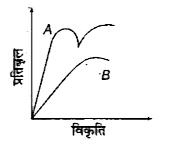
I A एक भंगुर पदार्थ है
II.B एक भंगुर पदार्थ है
III.A एक तन्य पदार्थ है
IV.B एक तन्य पदार्थ हैView Solution(A): Silver is a ductile material
(R): For a ductile material yield point and Breaking point are seperated by larger distance than for Brittle materials on the stress-strain curve.View Solutionदो पदार्थो P व Q के प्रतिबल व विकृति के मध्य आरेख बनाने पर एक व्यक्ति गलती से विकृति को y -अक्ष पर तथा प्रतिबल को x-अक्ष पर निरूपित करता है तो सही कथन है
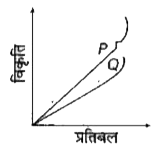 View Solution
View SolutionSTRESS-STRAIN DIAGRAM
View SolutionStress Strain Diagram
View SolutionOn gradual loading , stress - strain relationship for a metal wire is as follows . Within proportionality limit , stress prop strain or, "Stress"/"strain" = a constant for the material of wire. If "Stress"/"Strain" is x in elastic region and y in the region of yield , then
View Solutionदो पदार्थ के लिए प्रतिबल -विकृति वक्र निम्न है
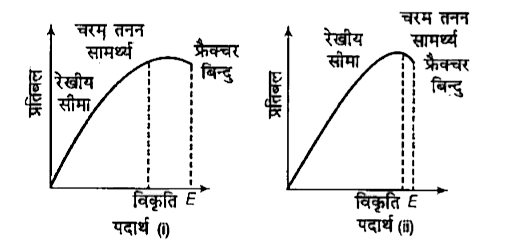 View Solution
View SolutionThe stress-strain graphs for two materials are as shown.
View SolutionOn gradual loading , stress - strain relationship for a metal wire is as follows . Within proportionality limit , stress prop strain or, = a constant for the material of wire.
Just on crossing the yield region, the material will have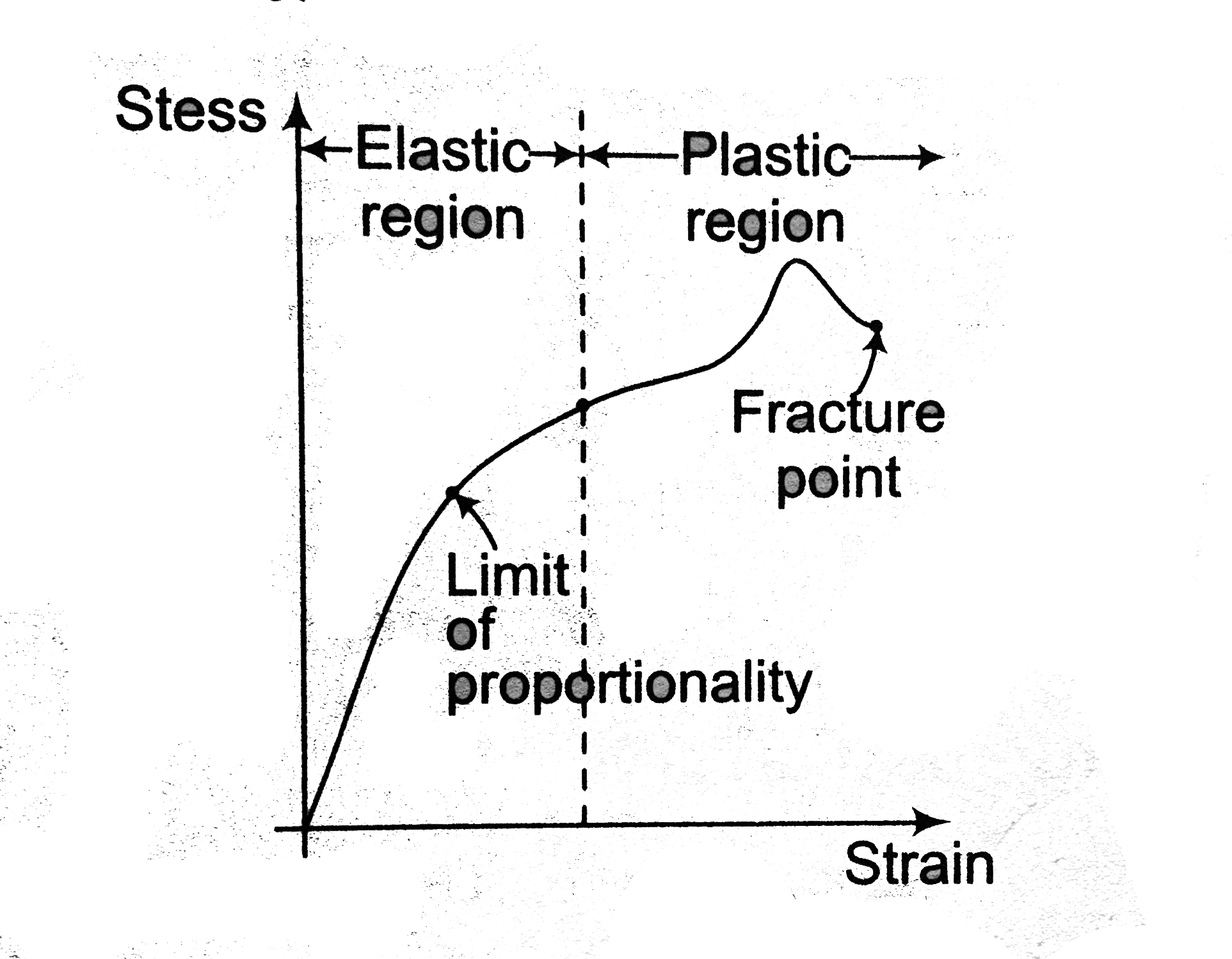 View Solution
View SolutionOn gradual loading , stress - strain relationship for a metal wire is as follows . Within proportionality limit , stress prop strain or, "Stress"/"strain" = a constant for the material of wire. Just on crossing the yield region, the material will have
View SolutionStress - Strain graph of two materials is shown below: State the law which relates stress with strain.
View SolutionThe stress strain group for material A & B are shown in figure Which is stronger material?
View SolutionFigure shows the strain stress curve for a given material. The Young's modulus of the material is
View SolutionFigure shows the strain - stress curve for a given material. The Young's modulus of the material is
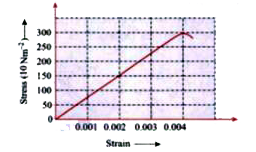 View Solution
View Solution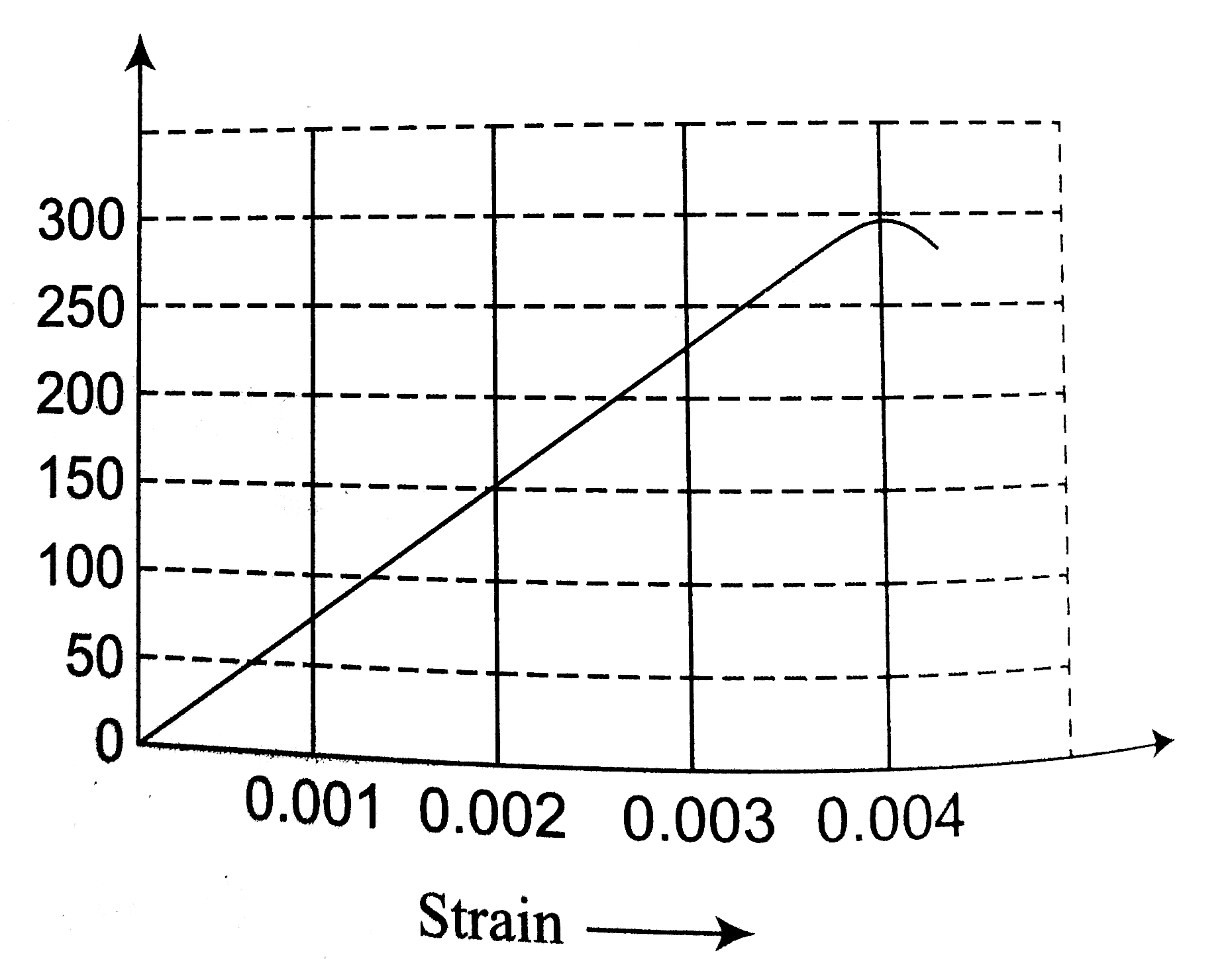
Figure shows the strain stress curve for a given material. The Young's modulus of the material isView SolutionThe diagram shows stress v/s strain curve for the materials A and B. From the curves we infer that:
 View Solution
View SolutionThe diagram shows stress v/s strain curve for the materials A and B. From the curves we infer that
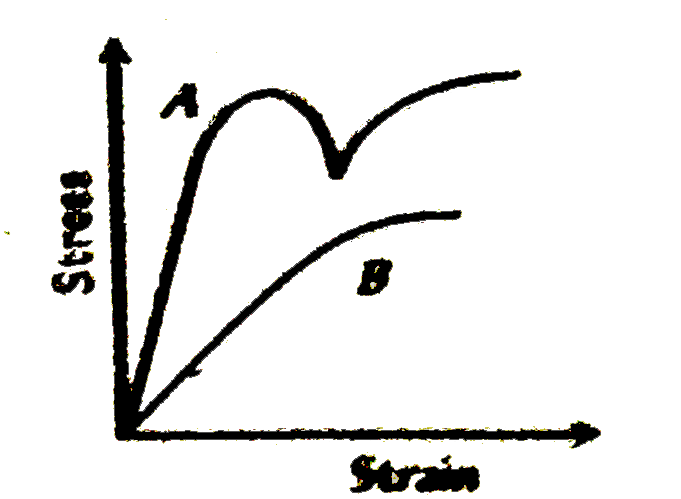 View Solution
View Solution
